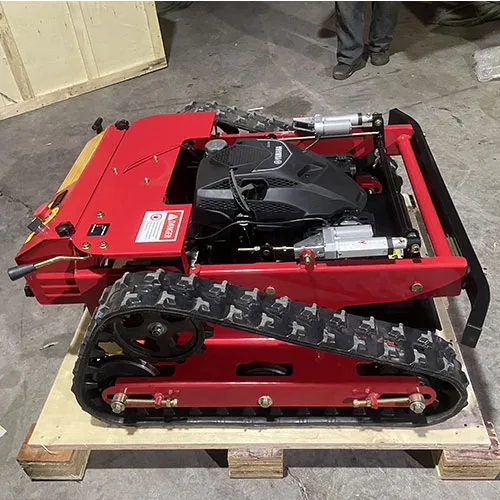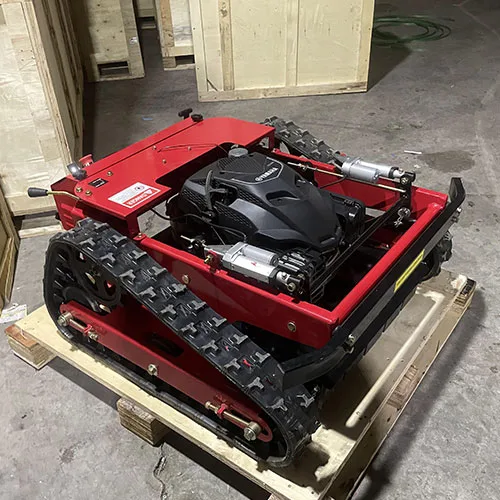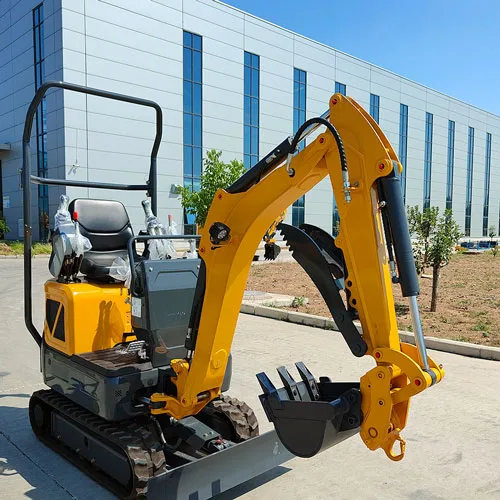I’m thrilled to have you here! Before we dive into the content, let’s stay connected. Join me on my social media platforms for more insights, community engagement, and regular updates. Here’s where you can find me:
📌 Facebook: Shandong Huaying International Trade Co., Ltd.
Now, let’s embark on this journey together. I hope you find the content here not only insightful and engaging but also valuable to your interests. Let’s learn, grow, and connect!
Table of Contents
Introduction

In recent years, remote control electric lawn mowers have become a sought-after tool for homeowners looking to simplify the tedious task of lawn care. As more people seek alternatives to traditional gas-powered mowers, these innovative devices promise to make mowing easier, faster, and more efficient. Powered by electric motors and equipped with remote control technology, these mowers allow users to guide the mower without ever stepping foot on the grass. But, as with all new technologies, remote control electric lawn mowers come with their own set of challenges that could impact their long-term value for certain buyers.
While many have embraced the convenience of these high-tech mowers, it’s crucial to weigh the pros and cons before investing. In this blog post, we’ll examine four key drawbacks to consider when evaluating whether a remote control electric lawn mower is right for your needs.
NO 1. High Initial Cost: Is the Investment Justifiable?
When it comes to purchasing a new lawn mower, one of the most critical factors to consider is cost. Remote control electric lawn mowers are undeniably more expensive than their traditional counterparts, particularly the basic electric and gas-powered models. The price tag for a remote control mower can vary widely, depending on the brand, features, and performance capabilities. While some entry-level models may cost a few hundred dollars, premium models with advanced features can exceed $1,000.
Key Points to Consider:
- Upfront Investment: The price of a remote control electric lawn mower can vary considerably. Entry-level models can start around $500, but many premium models cost over $1,000. This is a considerable investment compared to traditional mowers, which typically range between $100 and $500.
- Value for Money: The added cost of a remote control system, advanced sensors, and automated mowing technology might be appealing for those with large properties. However, for homeowners with small lawns, this added expense may not be justifiable, especially if the basic functionality of a traditional mower can meet their needs.
- Advanced Features: Features such as obstacle detection, automatic navigation, and programmable mowing patterns are designed to make mowing easier. However, these features come at a price and may not be essential for everyone. If your lawn is small and free of major obstacles, simpler models may suffice, reducing the need for costly, feature-packed mowers.
For homeowners with large lawns or those who prefer the convenience of automated mowing, a remote control electric lawn mower may be worth the extra cost. However, if you only need to maintain a smaller, simpler lawn, it may be more economical to stick with a traditional lawn mower that offers sufficient performance at a lower price point.
NO 2. Limited Battery Life and Long Charging Times

One of the standout benefits of an electric mower over a gas-powered one is its eco-friendliness and low maintenance requirements. However, for remote control electric lawn mowers, battery life can be a major limitation. Many models offer between 60 to 90 minutes of continuous mowing on a full charge. For larger lawns, this can mean that the mower will need to recharge before completing the job, leading to interruptions in the mowing process.
Key Points to Consider:
- Limited Runtime: The battery life of a remote control electric lawn mower typically lasts around 60 to 90 minutes per charge, which may not be sufficient for larger yards.
- Charging Time: Recharging the battery can take anywhere from 3 to 6 hours, depending on the model and its battery capacity. This means you could face significant downtime if you’re working on a large lawn that requires multiple charges.
- Charging Cycle Issues: For users who need to mow the lawn regularly, long charging times and the need for multiple recharges may become a frustrating bottleneck. Some mowers feature quick charge capabilities, but they still can’t eliminate the need for long breaks.
If you have a small to medium-sized lawn, this may not be a major issue. However, larger properties may require a mower with more powerful batteries or quick recharge features to ensure the task can be completed in a single session.
NO 3. Maintenance and Repair Challenges
While electric mowers generally require less maintenance than gas-powered models, remote control electric lawn mowers are more complex due to the advanced technology integrated into them. The remote control system, sensors, and automated navigation can sometimes lead to maintenance challenges that aren’t present with traditional mowers. These mowers also require more specialized knowledge for repairs, which can increase costs and make it difficult for DIY enthusiasts to handle.
Key Points to Consider:
- Complex Technology: The advanced electronics and sensors in a remote control electric lawn mower require specialized repair services. This can be more costly than traditional mowers, which typically only need occasional engine servicing or blade sharpening.
- Battery Replacement: Over time, the battery’s performance will degrade, requiring replacement. Depending on the model, this can be expensive and time-consuming.
- Sensor and Control System Maintenance: Problems with the mower’s remote control system or navigation sensors may arise, which require professional attention and could be costly to repair.
Routine maintenance tasks like blade sharpening, cleaning, and battery checks can be managed at home. However, more advanced issues related to the technology and sensors often need professional service, which increases the total cost of ownership.
NO 4. Limited Maneuverability and Terrain Challenges

Although remote control electric lawn mowers excel on flat, open lawns, they can struggle in areas with uneven terrain, obstacles, or steep slopes. The advanced sensors and automated systems can help navigate small obstacles, but they may not always be effective on hills or thick grass. For lawns with significant elevation changes, dense patches of grass, or many trees and flower beds, these mowers might require more effort to get the job done.
Key Points to Consider:
- Uneven Terrain: Mowers may struggle to climb steep hills or navigate uneven surfaces, especially in hilly or rugged lawns.
- Obstacles and Obstacles Detection: Though many models include obstacle detection features, some may fail to detect smaller or low-lying obstacles, leading to the need for manual adjustments.
- Limited Power for Thick Grass: Remote control electric mowers are not always as powerful as traditional gas mowers, making them less effective in tall, dense, or overgrown grass areas.
If your yard is large but relatively flat, a remote control mower may work well. However, if your lawn includes steep inclines, dense brush, or many obstacles, you may need to look for models that are specifically designed to handle such challenges or consider sticking with a traditional mower.
Table: Remote Control Electric Lawn Mowers vs. Traditional Lawn Mowers
| Feature | Remote Control Electric Lawn Mower | Traditional Lawn Mower |
|---|---|---|
| Initial Cost | Higher (hundreds to over $1,000) | Lower (affordable options) |
| Battery Life | 60-90 minutes per charge | N/A (gas-powered) |
| Charging Time | 3-6 hours for a full charge | N/A (gas-powered) |
| Maintenance | Requires specialized repairs | Basic maintenance (oil, blade) |
| Maneuverability | Works best on flat lawns | Works well on all terrains |
| Environmental Impact | Low emissions, eco-friendly | Higher emissions (gas-powered) |
| Noise Level | Quiet operation | Typically louder (gas-powered) |
Conclusion
Remote control electric lawn mowers offer unparalleled convenience, automation, and eco-friendliness. However, these advantages come with some significant trade-offs. The high initial cost, limited battery life, and the need for specialized maintenance and repair services can make remote control mowers less practical for certain homeowners.
For those with small to medium-sized, flat lawns, these mowers offer an efficient and low-maintenance option. However, for those with large, uneven properties or lawns with challenging terrain, the drawbacks may outweigh the benefits. Ultimately, before deciding if a remote control electric lawn mower is worth it, it’s essential to assess your specific lawn care needs, budget, and maintenance willingness.
FAQ
How long does the battery of a remote control electric lawn mower last on a full charge?
Most remote control electric lawn mowers offer around 60 to 90 minutes of continuous mowing per full charge, depending on the model and battery capacity.
Can remote control electric lawn mowers handle hills and slopes?
Remote control mowers can struggle with steep inclines. It’s best to check if the mower has features like enhanced traction or a high-powered motor to handle such terrain.
What kind of maintenance do remote control electric lawn mowers require?
While they require less maintenance than gas mowers, remote control mowers do need regular checks of the battery, sensors, and blades. More complex issues may require professional repairs.
Are remote control electric mowers noisy?
Remote control electric mowers are generally quieter than their gas-powered counterparts, making them ideal for homeowners who prefer a quieter mowing experience.



